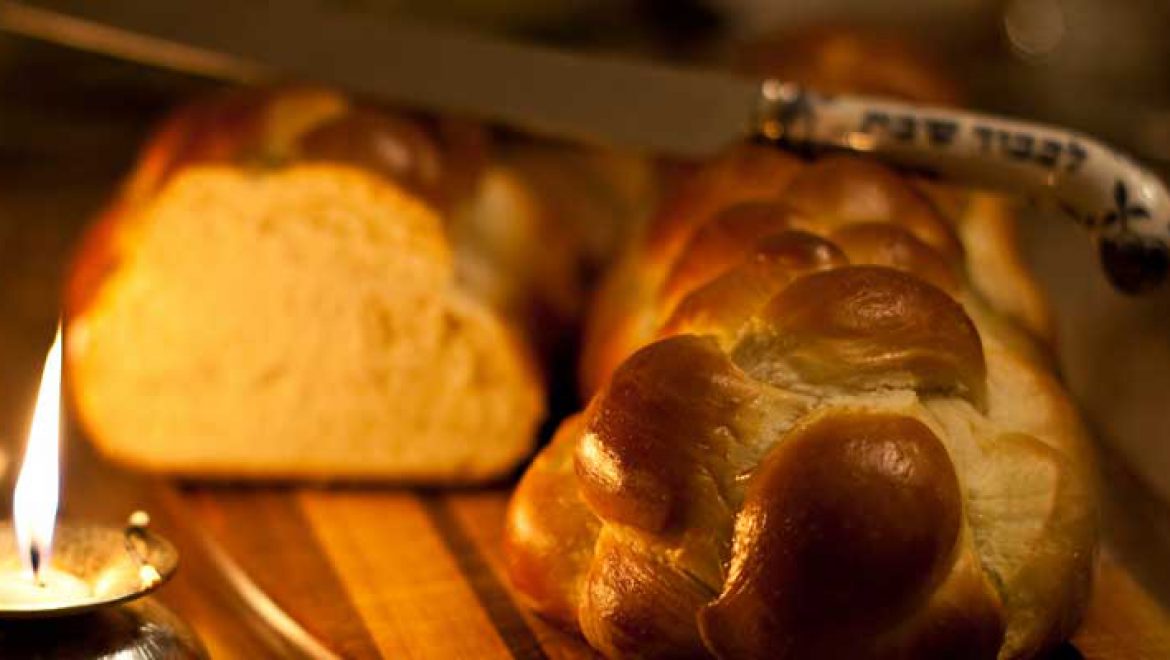
The following article is a helpful resource for anyone seeking basic information on the norms and rituals of a typical traditional family Shabbat dinner. It comes from www.kveller.com, a Jewish parenting website.
So you’ve been invited to a Shabbat dinner? Shabbat shalom! Here’s what to expect at this Friday night gathering.
1. When?
Shabbat technically begins at sundown, but many families begin their observance of Shabbat later if sundown is on the early side. When you’re invited, you’ll be told what time to arrive.
2. What should I wear?
Because you’ll likely be in someone’s home, you should dress for a nice dinner at a friend’s house, but also feel free to ask your hosts. Jeans might be fine, but it’s a good idea to check if you’re not sure.
3. Bring the kids?
Of course! If you’ve been invited to a Shabbat meal, the understanding is you’ll bring your family. If you or anyone in your family has a food allergy, is a vegetarian, or has any other dietary restrictions, make sure to let your host know ahead of time. Also, ask if you can bring something to the meal–a bottle of wine, challah, or a side dish.
(Editor’s note: Make sure you check to what degree your hosts observe the dietary laws of Kashrut before buying or making any food. If you will be arriving by car after Shabbat has already begun, some families may not feel comfortable accepting any food or drink for the meal. Also, according to Orthodox tradition, one is not permitted to receive a gift on Shabbat, so if you are planning on bringing something, make sure you check these details with your hosts first to avoid uncomfortable situations.)
4. What happens when I arrive?
Depending on the family, and when Shabbat begins, they may have already lit candles before you arrive. If not, you can watch as they light candles and say the blessing to begin Shabbat. Traditionally, it’s the mom (and daughters) who light Shabbat candles, but in many families men light, too. Two candles are lit, then the person lighting waves her arms above the candles three times, as if she was gathering the light to her face. She then covers her eyes with her hands and says the blessing. At this point she may also pause for a moment or two of silent prayer or reflection. When she uncovers her eyes, that’s the cue for the family to say Shabbat Shalom! Or Good Shabbos! Prepare for a round of hugging and kissing.
After candle lighting, everybody will probably sit down at the table. (Editor’s note: Many families go to synagogue for Kabbalat Shabbat and evening prayer services following candle lighting). Some families sing Shalom Aleichem, a song that welcomes the Sabbath angels, before they say the blessing over the wine.
5. What is the blessing over the children?
Some families bless their children one by one. Starting with the oldest, the parents will put their hands on the child’s head and give the child a blessing.
For boys, the introductory line is:
May you be like Efraim and Menashe.
For girls, the introductory line is:
May you be like Sarah, Rebecca, Rachel, and Leah.
For both boys and girls, the rest of the blessing is:
May God bless you and guard you.
May God show you favor and be gracious to you.
May God show you kindness and grant you peace.
Most parents give each child a kiss after they are blessed.
In traditional homes, a husband may sing Eshet Chayil to his wife. Eshet Chayil is a poem from the book of proverbs extolling the virtues of a good wife and mother.
6. Can We Drink Wine Yet?
Now it’s time for Kiddush, the blessing over wine. This blessing gives thanks for the Sabbath, a day of rest, and recalls the importance and holiness of resting. Each adult will be given a glass of wine (children usually get grape juice, or a sip of their parents’ wine) and one person will sing the blessing. At the end, everyone may join in (if you don’t know the words, don’t worry about it). Some families stand for the blessing, and others sit–take a cue from your hosts. When the blessing is over, everyone will say Amen, and the wine is yours for the drinking.
7. Do I Have to Wash My Hands?
In some families, after Kiddush, everyone heads to the kitchen to wash their hands. It is customary to take off your rings for this–you can just leave them on your plate. While washing the hands, there’s a blessing to say–if you don’t know it, feel free to ask for help. Then dry your hands and head back to the table. After hand washing, there is a custom not to speak until one has been given a piece of bread to eat, so don’t be insulted if suddenly everybody is giving you the silent treatment.
8. Yum! Challah!
Once everyone is back at the table, one or two challahs will be uncovered, and the prayer for giving thanks for bread is recited (often by children). Then the bread is sliced or ripped into chunks which are sprinkled with salt, and passed around for all to enjoy. Once you have your bread, you can talk again.
9. Can we eat now?
At this point it’s just a regular meal. No special rituals or requirements, so dig in!
10. Can we leave after eating?
After the meal, some families will bentch, a Yiddish word that means saying the blessing that gives thanks for food. Before bentching, little booklets with the blessing in them will be handed around. Feel free to ask about page numbers if you’re not sure. Some families also like to sing zemirot after the meal, special Hebrew and Aramaic songs about how peaceful and fun it is to celebrate Shabbat.


